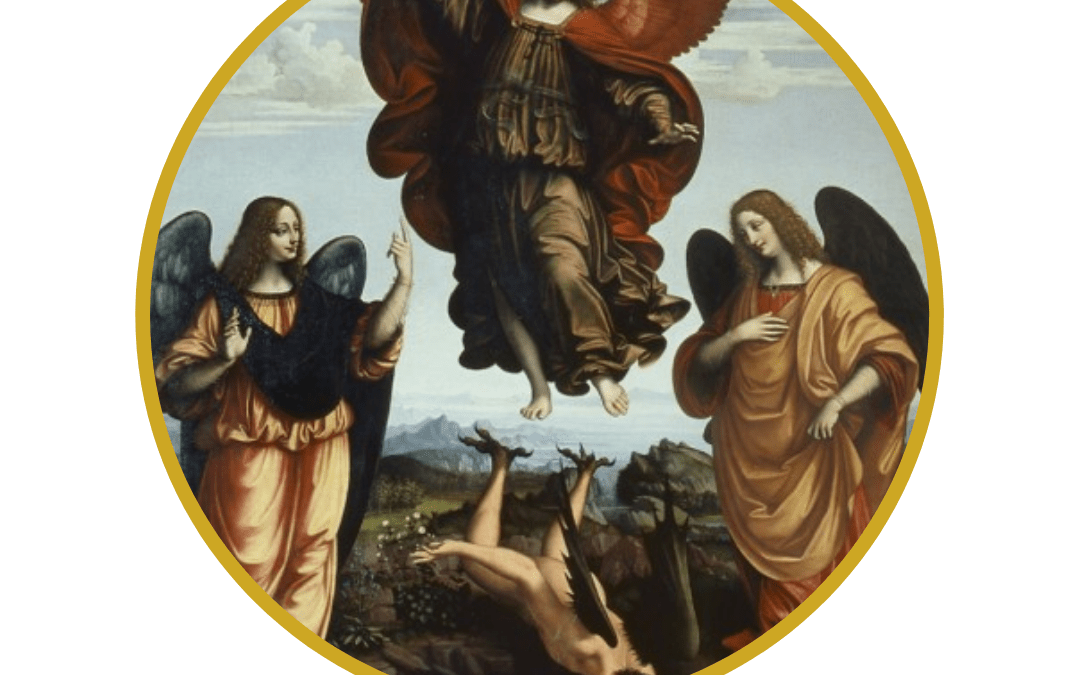
by popadmin | Sep 26, 2021 | CIC Saint Writeups
29 September: Feast of Saints Michael, Gabriel & Raphael, Archangels. This feast, also known as “Michaelmas,” was a Holy Day of Obligation until the 18th century. The Catechism of the Catholic Church teaches that “The existence of the spiritual, non-corporeal beings that Sacred Scripture usually calls “angels” is a truth of faith. The witness of Scripture is as clear as the unanimity of Tradition.” Archangels are one of the nine choirs of angels listed in the Bible. (In ascending order, the choirs or classes are: Angels, Archangels, Principalities, Powers, Virtues, Dominations, Thrones, Cherubim, and Seraphim.) St. Michael’s name means “Who is like unto God?” and he is known as the Prince of the heavenly host. St. Michael’s task is doing battle against Satan and all his evil followers. His name appears in Scripture four times. He is usually depicted as a mighty warrior and is known as a champion of justice; the guardian of the Church; the protector and defender the friends of God. We invoke St. Michael for help in the fight against evil and to rescue souls from Satan, especially at the hour of death. St. Gabriel’s name means “God is my strength” and he appears as a messenger in the Bible three times (to the prophet Daniel; to Zachariah announcing the birth of John the Baptist; and to Mary at the Annunciation). St. Gabriel’s famous greeting to Mary at the Annunciation was Hail Mary, full of grace. St. Raphael’s name means “God has healed.” Knowledge of St. Raphael comes from the book of Tobit. His mission as healer and fellow traveler with Tobias has caused him to be invoked for journeys and at critical moments in life. Tradition also holds that Raphael is the angel that stirred the waters at the healing pool in Bethesda. Another angelic feast is celebrated this week on 2 October: Feast of the Guardian Angels. “From infancy to death human life is surrounded by their watchful care and protection. Beside each believer stands an angel as protector and shepherd leading him to life.” (Catechism of the Catholic Church, 336) St. Bernard wrote “…the angels are here; they are at your side, they are with you, present on your behalf. They are here to protect you and to serve you.” God has given each of us the incredible gift of a guardian angel – they will protect us and help us attain eternal salvation. “For he will give his angels charge of you to guard you in all your ways.” (Psalm 91:11)
Ideas for celebrating this feast day at home:
- Memorize the Prayer to St. Michael the Archangel. Pray it daily for protection from evil!
- In honor of St. Gabriel, Learn theAngelus. Traditionally, it is prayed at 6 and 12 o’clock
- Make recipes related to Michaelmas. Michael Bannock bread is traditionally served with roasted goose and carrots. Roasted chicken or Cornish hens work, too! (Easiest option is picking up a hot rotisserie chicken from the store!) Other ideas: angel food cake, devil’s food cake, angel hair pasta, or deviled eggs. For extra fun, poke cocktail swords (or little toy swords from play action figures) into your food! Decorate with white as symbolic of the angels.
- Do you have any angel-shaped Christmas cookie cutters? Use them to trace and color angels to decorate. OR, bake up some sugar cookies in angelic shapes.
- Folklore says Michaelmas is the last day that blackberries can be picked and eaten because when St. Michael expelled the devil from heaven, he fell from the skies and landed in a prickly blackberry bush. Satan cursed the fruit, stamped and spat on it, making it unfit for eating. So, on this feast day: enjoy blackberry wine or buy fresh blackberries to put on oatmeal, bake some into a pie or cobbler (recipe idea here), or top an angel food cake with blackberries.
- Saint Michael is the patron saint of police officers. This is the perfect day to stop by your local police station with thanks and treats. Tell them that it’s their feast day so you brought some food for feasting and you are praying for them.
- Don’t forget to memorize the Prayer to your Guardian Angel on October 2!
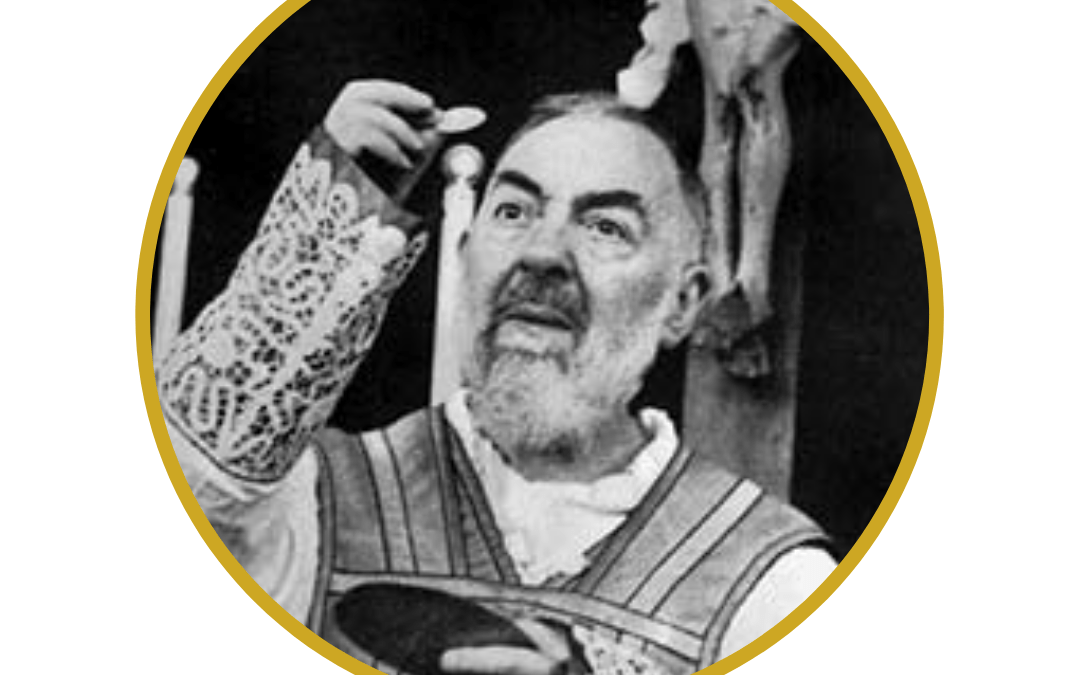
by popadmin | Sep 19, 2021 | CIC Saint Writeups
23 September: Feast of Saint Pio of Pietrelcina. Saint Pio is better known as “Padre Pio”. He was born Francesco Forgione in 1887, one of seven children in a simple peasant family. His growing up years were marked by daily Mass, family rosary, and acts of penance. He decided at a young age to dedicate his life to God. He joined the Capuchin Franciscan Friars at 15 years old. He was ordained a priest in 1910 and took the name Pio, a modern Italian form of “Pius,” in honor of Pope St. Pius V. He was assigned to the Friary in San Giovanni Rotondo in central Italy, where he lived the rest of his life. Padre Pio suffered from illnesses and health problems. He also experienced religious ecstasy and attacks from the devil (friars would report strange noises coming from his cell). He was reportedly able to bi-locate, levitate, and heal by touch. In 1918, while praying before a cross, Padre Pio received the painful Stigmata – the five wounds of Christ’s passion. He was the first stigmatized priest in Church history. The Stigmata would remain with him for 50 years. Many doctors looked at his wounds with no explanation. They openly bled with no drop in blood pressure. Doctors estimated that he lost a cup of blood every day. The wounds were deep, but free of inflammation and swelling. During World War I, Padre Pio served in the military and offered his own personal suffering for an end to war. In 1956 he founded the House for the Relief of Suffering, a hospital that serves 60,000 a year. Against his wishes, Padre Pio’s reputation for holiness and miracles began to attract crowds. Millions of people attended his Masses. He received letters from believers all over the world who asked for his saintly counsel and spiritual guidance. Countless were attracted to his confessional, where he would hear confessions for up to 16 hours a day. People waited as much as two weeks to have him hear their confession. Yet despite such notoriety, he would often say, “I only want to be a poor friar who prays.” His life was marked by long hours of prayer and sacrifice. He had a deep union with God, a burning love for the Holy Eucharist, and a fervent devotion to Our Blessed Mother. Worn out by years of intense suffering and constant apostolic activity, Padre Pio was called to his heavenly reward on September 23, 1968. He was canonized by Pope St. John Paul II in 2002. Today, his tomb is the most visited shrine in Europe, surpassing even Fatima and Lourdes.
Famous quotes from Padre Pio: “Today’s society does not pray. That is why it is falling apart.” – “Prayer is the best weapon we possess, the key that opens the heart of God.” – “Pray, hope and don’t worry. Worry is useless. Our Merciful Lord will listen to your prayer.”
Ideas for celebrating this feast day at home:
- Pray, hope and “donut” worry! Enjoy donuts as a feast day treat and remember this wise advice. Write out Padre Pio’s quote and put it on your wall as a daily reminder.
- Today’s menu should include Italian foods in honor of this Italian-born saint (pasta, risotto, pizza, etc). For dessert, make “Stigmata krispie treats”: use a hand-shaped cookie cutter (or your hand as a guide!) to cut out rice krispie treats. Put a dab of red icing in the center of the hand to look like a Stigmata.
- Padre Pio loved to hear confessions: his feast day is a great reminder for us! Put it on your calendar and make a commitment to go to confession.
- Watch a free video on FORMED about Saint Padre Pio: link here.
- Family prayer time: Padre Pio said “Prayer is the oxygen of the soul.” Today, kneel together as a family and pray. Make this a part of your daily routine. Padre Pio’s own family was known for praying a rosary together– try to add this to your family life, too!
(sources: catholicculture.org, Saint Pio of Pietrelcina by Capuchin Franciscan Friars, ncregister.com)
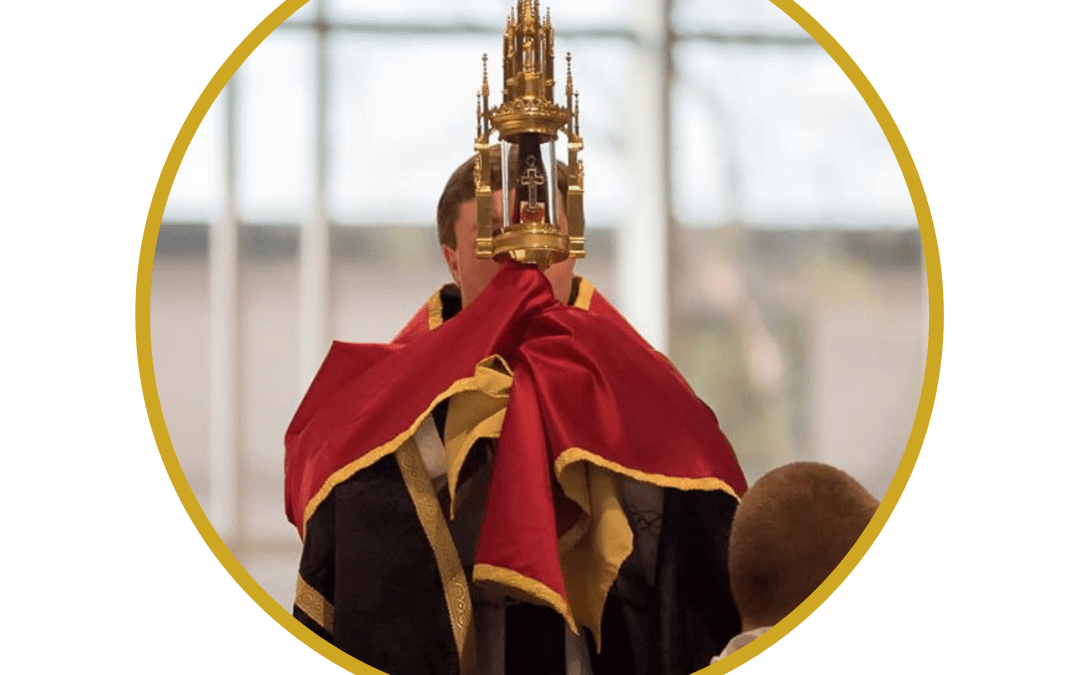
by popadmin | Sep 12, 2021 | CIC Saint Writeups
14 September: Feast of the Exaltation of the Holy Cross. This feast commemorates three historical events: finding of the True Cross by Saint Helena; dedication of the churches on the site of the Holy Sepulchre and Mount Calvary; and restoration of the True Cross to Jerusalem by Heraclius II. After the Resurrection, Jewish and Roman authorities hid the Holy Sepulchre, Christ’s tomb. Earth was mounded up and pagan temples built on top. Tradition said Christ’s Cross had been hidden nearby. Saint Helena (Constantine’s mother) was divinely inspired to travel to Jerusalem in 326 to find the True Cross. Three crosses were eventually found. Helena and Saint Macarius, bishop of Jerusalem, devised an experiment to determine which was the True Cross. The crosses were taken to a woman near death; when she touched the True Cross, she was healed. Another tradition says the body of a dead man was laid upon each cross. The True Cross restored the man to life. Constantine constructed churches at the Holy Sepulchre and Mount Calvary. Those churches were dedicated and the Feast of the Exaltation of the Holy Cross was celebrated. The feast slowly spread, until, by the year 720, it was universal. In the 7th century, Persians conquered Jerusalem and captured the Cross. Heraclius II defeated them and restored the Cross to Jerusalem. Tradition says he carried the Cross on his own back, but when he attempted to enter the church on Mount Calvary, a strange force stopped him. Patriarch Zacharias of Jerusalem advised him to take off his royal robes and crown and to dress in penitential garb instead. As soon as Heraclius did so, he was able to carry the Cross into the church. Truly, this feast day is a celebration of God’s greatest work: His death and resurrection which defeated death and opened Heaven. Christ transformed an instrument of torture and humiliation into a symbol of salvation. When Moses lifted up the bronze serpent over the people, it was a foreshadowing of salvation through Jesus when He was lifted up on the Cross. To follow Christ we must take up His cross, follow Him and become obedient until death. We make the Sign of the Cross which helps to fix our minds and hearts on God. At Baptism, we are sealed with the Sign of the Cross, signifying our redemption and that we belong to Christ. Let us look to the cross frequently, and realize that when we make the Sign of the Cross we give our entire self to God — mind, soul, heart, and body. The antiphon for today says it perfectly: “We should glory in the cross of our Lord Jesus Christ, for he is our salvation, our life and our resurrection: through him we are saved and made free.”
Ideas for celebrating this feast day at home:
- Craft project: make and decorate a cross. Children could use popsicle sticks or twigs and twine. Adults could build a “yard cross” out of big pieces of lumber or tree limbs tied together.
- Place blessed crucifixes prominently throughout your home. Teach children to reverently make the sign of the cross.
- On this feast, eat red foods like strawberries and tomatoes, and drink red beverages like punch or red wine, reminding us of the blood Jesus shed on the cross. Eating white foods, like mozzarella cheese, reminds us of our baptism (when we were signed with the cross).
- Cook with sweet basil, which tradition says grew over the place where the True Cross was found. Use wooden skewers and make an appetizer of tomatoes, basil, and fresh mozzarella cheese. The wood of the skewers reminds us of the cross. Recipe idea here! Or, simply enjoy a dinner of spaghetti with tomato basil sauce and fresh parmesan.
- Make a dessert in the form of a cross, or decorated with a cross. Although usually made on Good Friday, hot cross buns would also be perfect for today (recipe here).
- Pray the Stations of the Cross. The prayer repeated at each station: We adore You, O Christ, and praise You, because by Your Holy Cross You have redeemed the world.
- Available on FORMED is a story about St. Helena and the True Cross: click here.

by popadmin | Sep 6, 2021 | CIC Saint Writeups
8 September: Feast of the Nativity of the Blessed Virgin Mary. This feast day commemorates the birth day of Mary. There are only three birthdays on the liturgical calendar: Mary, Jesus, and John the Baptist. Usually, it is the custom to celebrate the feast day of a saint on the date of their death as that marks their “birth” into everlasting life. Mary, however, entered the world sinless (known as the “Immaculate Conception”). She was born to be the mother of the Savior of the world, the spiritual mother of all men, and the holiest of God’s creatures. Mary is called the firstborn of the redeemed and her nativity is “the hope of the entire world and the dawn of salvation” (Pope Paul VI, Marialis Cultus). Mary’s birth is not recorded in scripture but is found in the Protevangelium of James, an apocryphal writing from the 2nd century. The liturgical celebration of this feast has a joyous theme of light: the world that had been shadowed in the darkness of sin sees a glimmer of light with the arrival of Mary. Through Mary comes Christ, the Light of the World. The Blessed Virgin has a pivotal role in the history of salvation, and she was given the highest mission ever commended to any creature. We rejoice that the Mother of God is our Mother, too. Today and every day, let us often call upon the Blessed Virgin as “Cause of our joy”, one of the most beautiful titles in her litany.
There are some wonderful traditions from around the world that are associated with Our Lady’s birthday. Since September 8 marks the end of summer and beginning of fall, this day has many thanksgiving celebrations attached to it. In the older form of the Roman Ritual there is a blessing of the fall planting seeds. The winegrowers in France called this feast “Our Lady of the Grape Harvest.” The best grapes are brought to church to be blessed and then some bunches are attached to hands of the statue of Mary. A festive meal which includes the new grapes is part of this day. In the Alps section of Austria this day is “Drive-Down Day” during which cattle and sheep are led from their summer pastures in the slopes and brought to their winter quarters in the valleys. This was usually a large caravan, done with decorations and festivity. In some parts of Austria, milk from this day and all the leftover food are given to the poor in honor of Our Lady’s Nativity.
Ideas for celebrating this feast day:
- Have a birthday party for Mama Mary! Have children decorate the house with leftover party supplies in honor of their heavenly mother. Blue is the fitting color for this feast day (it is symbolic of Mary’s blue mantle).
- Ask children to think of a birthday “gift” they can give to Mary: a prayer; an act of mercy; a small sacrifice; a virtue to work on; a handful of wildflowers to adorn a Marian statue; etc.
- Make a blue and white cupcake rosary (a “rosary” made out of cupcakes, mini cupcakes, or cookies. Idea here. Sing “happy birthday” to Mary before enjoying this special dessert! A simple white cake symbolizing Mary’s purity is also perfect for this feast day.
- Eat “blue” foods, like blueberries, on this Marian feast day! Ideas: blueberry muffins or pancakes, blueberry pie, blueberry cobbler, or, simply, fresh blueberries.
- Consider purchasing a Marian statue for your home. Creating a Marian garden in your yard is another beautiful way to honor Our Lady.
- Learn and memorize prayers to Mary, such as: the Angelus, Litany of Loreto, Memorare, Hail Mary, and Hail Holy Queen.
- Learn a Marian hymn together as a family. Ideas: Regina Coeli, Ave Maria, Salve Regina, Immaculate Mary and Hail, Holy Queen.
- Find out about the devotion to “Maria Bambina” (“Baby Mary”)
- Read the papal encyclical Redemptoris Mater (Mother of the Redeemer) written by Saint John Paul II: Available here.
- Pray a rosary – that’s the best way to say “happy birthday” to your heavenly mother!
(sources: Excerpts from The Holyday Book by Fr. Francis Weiser, catholicculture.org, catholiccuisine.blogspot.com)
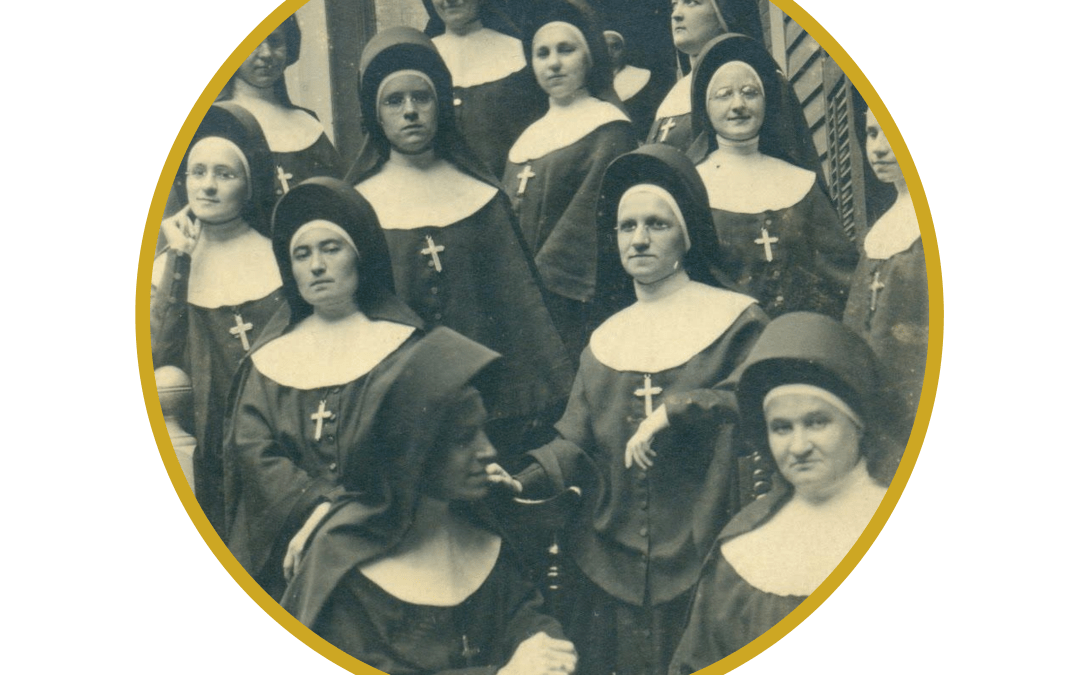
by popadmin | Aug 29, 2021 | CIC Saint Writeups
4 September: Feast of Blessed Mary Stella and Her Ten Companions. Blessed Mary Stella and Her Ten Companions (also known as the Martyrs of Nowogrodek) were nuns of the Holy Family of Nazareth who arrived in Nowogrodek in September 1929. Nowogrodek was a small town in the eastern lands of the Republic of Poland. Its population included Poles, Jews, Muslims, Belarusians and Russians and others. From the beginning, the nuns worked to meet the needs of the community. They ran a school for girls – one of their first students was a Muslim girl. The nuns were examples of deep faith and were very hard workers. Their help in the community gradually gained them the respect of the locals. In September 1939, the Germans attacked Poland from the West and Soviet Russia attacked from the East, marking the beginning of WWII. During Soviet occupation, the nuns could not run the school, but continued to care for the local people. They were expelled from their house; forbidden to wear their habits. Thousands of innocent people were arrested and transported. Then, Russians withdrew and German occupation began. The Germans started their terror by gathering dozens of Jews in the market square and killing them, while their orchestra played a waltz. Daily, executions continued. In July 1942, a mass execution took place in the forest near Nowogrodek, 60 people, including two priests—Fr. Jozef Kuczynski and Fr. Michal Dalecki—were shot. The next year, 120 people were arrested to be executed. Sister Maria Stella met with the local priest, Fr. Zienkiewicz and said: “My God, if sacrifice of life is needed, let them kill us and not those who have families. We are even praying for that.” Strangely, the execution of the 120 people was stopped. Those who were supposed to be killed were instead transported to compulsory work in Germany. Some were even released. However, the Gestapo did not forget about murdering. Sister Maria Stella and her nuns were ordered to report to Gestapo headquarters. After praying the rosary, the 11 nuns bravely went to the Gestapo. The sisters’ names were: Stella, Imelda, Rajmunda, Daniela, Kanuta, Sergia, Gwidona, Felicyta, Heliodora, Kanizja and Boromea. (There was one more nun who did not go. The 12th, Malgorzata, was the oldest nun helping in the hospital and Mother Superior ordered her to stay home in case the others did not return.) That evening, the nuns thought they would be transported to Germany for slave work. They did not hear any accusations, there was no investigation. On Sunday, Aug. 1, 1943, at dawn, the nuns were herded into a van and transported to a remote spot in the woods where an open grave waited. There, kneeling side by side in the habits of their order, the sisters bade each other farewell. One by one, beginning with Sister Stella, all 11 nuns were shot; their lifeless bodies tumbled into the grave. Love was killed by hate. Sister Malgorzata waited several weeks following the execution before risking a solo journey through the woods in search of their remains. She attended to the mass grave and prayed for the souls of her beloved sisters until their bodies were exhumed in March 1945 and laid to rest on the grounds of the Church of the Transfiguration following Mass and Christian burial. Fr. Zienkiewicz, Sister Malgorzata and all those 120 persons for whom 11 nuns had sacrificed their lives, survived the war. “No one has greater love than this—that one lays down his life for his friends,” said Saint John Paul II on the day of the nuns’ beatification in March 2000.
Ideas for celebrating this feast day at home:
- Watch a video on the lives of these martyrs: click here.
- In honor of the 11 nuns who gave their lives for others, make 11 sacrifices today – especially for those most in need of God’s mercy.
- Pray the Litany of Blessed Maria Stella and 10 companions
- Just as these brave martyrs did on the evening they faced the Gestapo, pray a rosary with your family, for an end to our nation’s own holocaust: abortion.
- Finally, enjoy a polish dinner on this feast in honor of these heroic Polish nuns. Recipes at this link.
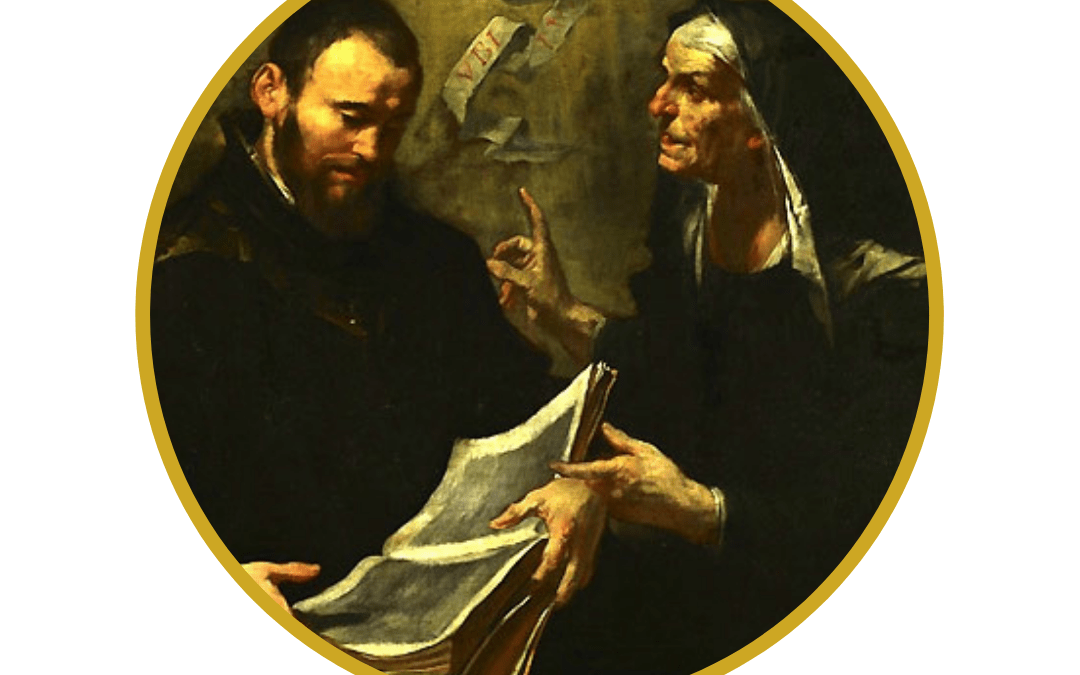
by popadmin | Aug 22, 2021 | CIC Saint Writeups
27 & 28 August: Feasts of Saint Monica and Saint Augustine. The feast of Saint Monica is celebrated the day before that of her son, Saint Augustine; a fitting combination. Born of Christian parents in Tagaste, North Africa in 333, Monica was married early in life to a man named Patritius. He was a pagan, known for a violent temper and immoral habits. Monica’s almsgiving and constant prayer annoyed him. They had three children, Augustine, Navigius, and a daughter, Perpetua (who later became a nun). As a mother, Monica’s anxiety centered on Augustine: he was wayward and, as he himself tells us, lazy. He was sent to Madaura to school and Monica seems to have literally wrestled with God for the soul of her son. During this time, Monica received a great consolation when Patritius converted to Christianity before his death. Augustine then became a Manichean, which caused Monica to kick him out of her house. She went tearfully to the bishop to ask for help and he responded famously, “Don’t worry, it is impossible that a son of so many tears should be lost.” One night, Augustine left for Rome and Monica followed him the whole way and met St. Ambrose who played a key role in Augustine’s conversion. Monica died at Ostia, near Rome in 387. On the day after St. Monica’s feast, the Church honors St. Augustine. Augustine was born on November 13, 354. The story of his life is written in the autobiographical Confessions. Augustine, though brought up early as a Christian, lived a life of revelry and sin, and drifted away from the Church. He enjoyed the pursuit of pleasure above all things. He was well-known in Carthage for his brilliant mind and rhetorical skills and sought a career as an orator or lawyer. He also fell in love with philosophy. He then went to Rome and later Milan where he met Saint Ambrose, the bishop and Doctor of the Church, whose sermons inspired him to look for the truth he had always sought in the faith he had rejected. He was baptized by St. Ambrose and soon after, his mother died knowing her prayers had been answered. Augustine returned to Africa, “having now cast off from himself the cares of the world, he lived for God… in fasting, prayers, and good works, meditating on the law of the Lord by day and by night.” On a visit to Hippo he was proclaimed priest and then bishop against his will. He later accepted it as the will of God and spent the rest of his life as the pastor of Hippo, from where he spent much time refuting the writings of heretics. He wrote more than one hundred works of theology, apologetics, and philosophy, including his famous The City of God. He died of illness at age seventy-five and was venerated as a saint immediately. Augustine was recognized as a Doctor of the Church in 1298. He is known as one of the most significant and influential thinkers in the history of the Catholic Church. His teachings were the foundation of Christian doctrine for a millennium.
Ideas for celebrating these feast days at home:
- Saint Monica is known for her persistent prayers. Make soft pretzels – their form represents folded hands in prayer! Recipe here.
- Monica is the patron saint of mothers: consider her feast a special mother’s day. Do something nice for your mom. If she is in heaven, offer prayers and sacrifices on her behalf.
- In honor of St. Augustine, consider adding religious artwork to your home to provide daily reminders of God’s Presence. “You have made us for yourself, O Lord, and our hearts are restless until they rest in you.” (St. Augustine, Confessions)
- The FORMED website has several excellent audio dramas, videos, commentaries, and shows for both children and adults to enjoy on Saint Monica and Saint Augustine. Click here.
- Through the persistent prayer of his mother, St. Augustine converted and became one of the most influential thinkers of the Church. Pray in a special way for the conversion of sinners on these feasts. Remember to pray especially for family and friends that have fallen away from the church.






Recent Comments